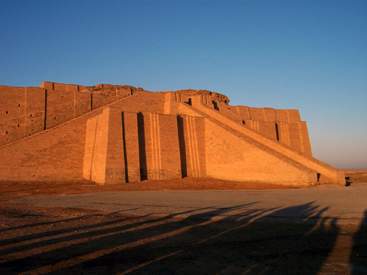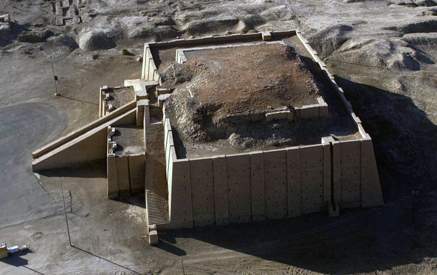Ur Sacred Precinct
The Sacred Precinct at Ur is a temple complex
the important aspects of which are the Ziggurat of which Nanna's
E-kis-nu-gal is a part, the temple of Nanna's
wife Ningal, and the Gipar which was a special housing for entu priestesses and their staff. [2] [3] The Gipar and its cultic function: The Gipar at Ur was uncovered by Woolley and was
found to be a self-contained residence with kitchens, ceremonial
rooms etc and even a crypt. The was the residence of the entu
priestesses and a bedroom was incorporated within the shrine which
presumably relates to the Sacred Marriage ritual. J.N Postgate
(1992
In examining the archeological evidence at the
temple of Ninlil, Penelope N. Weadock makes an interesting observation
[1]; She notes that like all Mesopotamian temples devoted to a
god, the Ningal temple contained features that were particular
to the residence of the divine: "the ritual washing place
where the priest or worshiper might purify himself before approaching
the divine owner of the house; the bases upon which stood stelae
comemmorating the pious acts of such important attendants as the
king or the entu; and the benches against the wall serving as
seats the the divine administrators of the temple affairs."
In addition there was of course "the cella and ante-cella..here
the goddess sat on a raised dais and here visitors paid court
to her effigy." [1] The Giparu at Ur, by Penelope N. Weadock Iraq, 1975 British Institute for the Study of Iraq. [2] http://picasaweb.google.com/fringesofhisgrace/MartinSDeployment#5174275124533544034 |

